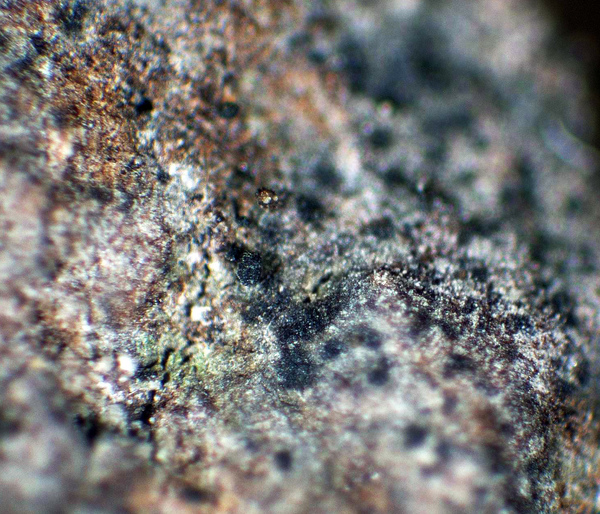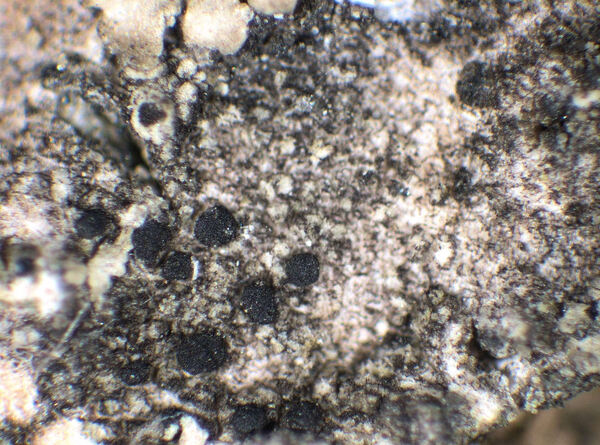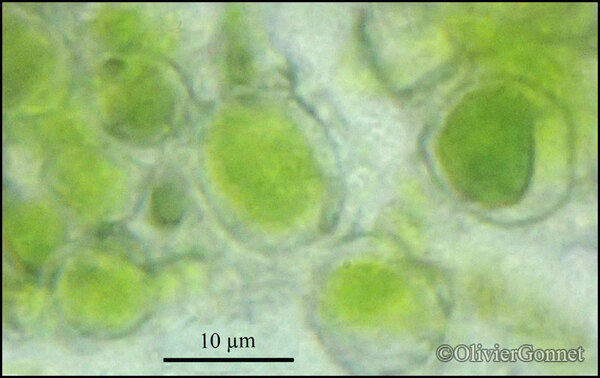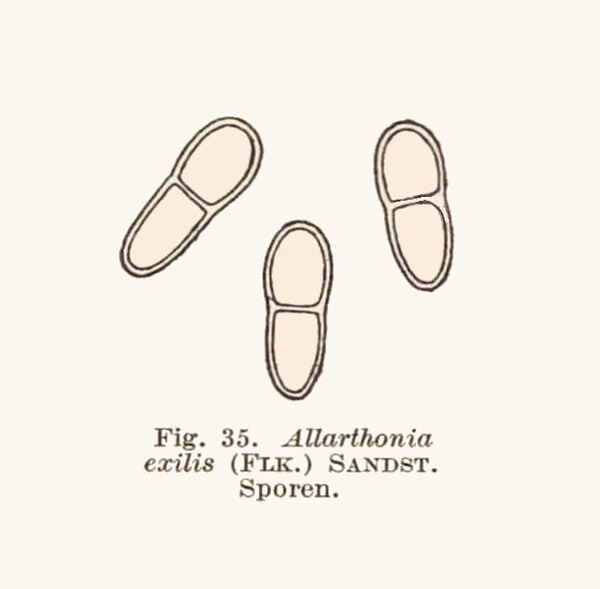Arthonia apatetica (A. Massal.) Th. Fr.
Bot. Not.: 56, 1866. Basionym: Catillaria apatetica A. Massal. - Symmicta Lich.: 50, 1855.
Synonyms: Abrothallus exilis auct. non (Flörke) A. Massal.; Allarthonia exilis auct. non (Flörke) Sandst.; Arthonia exilis auct.; Arthonia rugulosa (Kremp.) Almq.; Catillaria exilis auct.; Lecania zinaidae Oxner; Lecidea synothea var. exilis Flörke
Distribution: N - Frl, Ven (Lazzarin 2000b, Nascimbene & al. 2005b, Thor & Nascimbene 2007), TAA (Nascimbene & al. 2007b, Nascimbene 2014), Lomb, Piem (S-F68607). C - Marc (Nimis & Tretiach 1999), Abr (Nimis & Tretiach 1999, Gheza & al. 2021), Mol (Nimis & Tretiach 1999, Caporale & al. 2008), Sar (Zedda 2002, Rizzi & al. 2011, Di Nuzzo & al. 2022). S - Pugl (Nimis & Tretiach 1999), Bas (Nimis & Tretiach 1999), Cal (van den Boom & Khodosovtsev 2004), Si (Nimis & al. 1994, Grillo & Cristaudo 1995).
Description: Thallus crustose, inconspicuous, more or less continuous, grey-brown or olive-brown, of brownish hyphae loosely growing between the algal cells, but tightly arranged around them. Apothecia arthonioid, black, 0.15-0.4 mm across, irregular in shape but not much longer than wide (not lirelliform), with a convex, smooth disc and a poorly visible proper margin. Proper exciple absent; epithecium grey-brown, of branched hyphae in a gelatinous matrix, granulose; hymenium colourless to very pale red-brown, 40-60 µm high, hemiamyloid, I+ red, K/I+ blue; paraphysoids slender, c. 1 µm thick, the terminal parts extending periclinally along the surface of the epithecium, the apical cells brown-black-capped and 3-4.5 µm wide; hypothecium colourless to pale olive brown. Asci 8-spored, clavate-subglobose, semi-fissitunicate, with a large apical dome and a distinct ocular chamber, the tholus with a K/I+ ring and pale blue flanks, 30-40 x 18-22 µm. Ascospores 1-septate and constricted at septum, with unequal cells, hyaline, ovoid, (10-)12-14(-16) x 3.5-5(-6) µm, with a very thin gelatinous sheath reacting K/I-. Photobiont chlorococcoid. Spot tests: K-, C-, KC-, P-, UV-. Chemistry: without lichen substances.
Note: a mainly temperate species found on base-rich and soft bark, especially of Sambucus, and on young twigs of deciduous trees in sheltered situations, with optimum in the submediterranean belt. The species is heterogeneous, and Italian material needs revision.
Growth form: Crustose
Substrata: bark
Photobiont: green algae other than Trentepohlia
Reproductive strategy: mainly sexual
Poorly known taxon in need of further study
Commonnes-rarity: (info)
Alpine belt: absent
Subalpine belt: absent
Oromediterranean belt: absent
Montane belt: rare
Submediterranean belt: rather rare
Padanian area: extremely rare
Humid submediterranean belt: rather rare
Humid mediterranean belt: rare
Dry mediterranean belt: absent
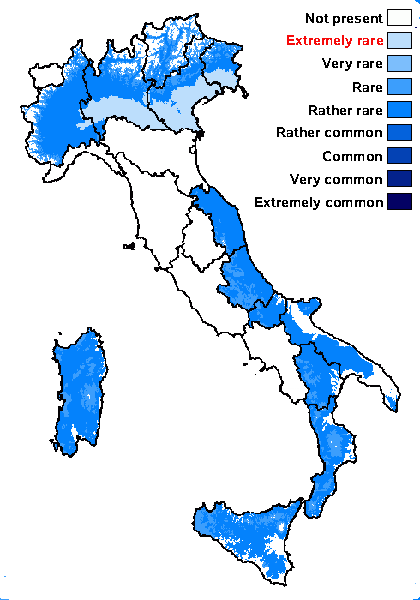
Predictive model
Herbarium samples
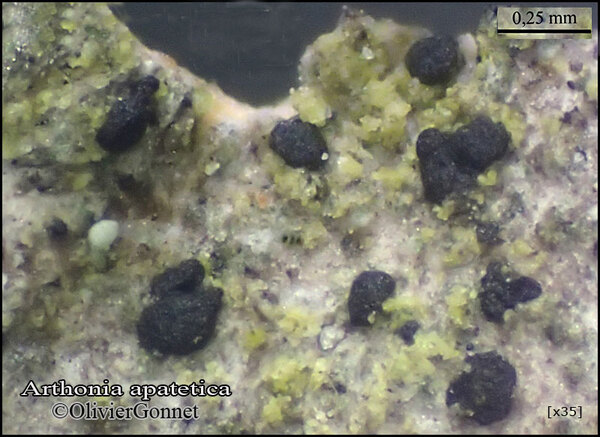
courtesy Olivier et Danièle Gonnet - Source: https://www.afl-lichenologie.fr/Photos_AFL/Photos_AFL_A/Textes_A3/Arthonia_apatetica.htm
France, Brives-Charensac - Haute-Loire
8/11/2016
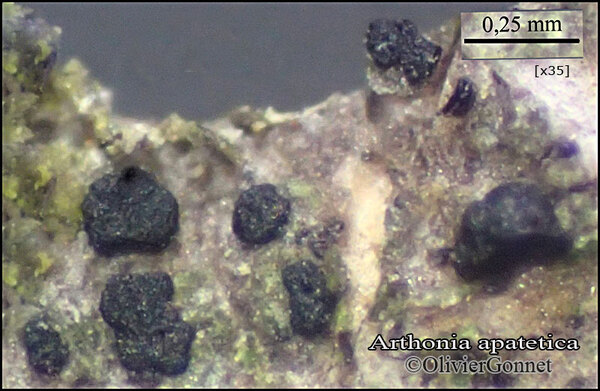
courtesy Olivier et Danièle Gonnet - Source: https://www.afl-lichenologie.fr/Photos_AFL/Photos_AFL_A/Textes_A3/Arthonia_apatetica.htm
France, Brives-Charensac - Haute-Loire
8/11/2016
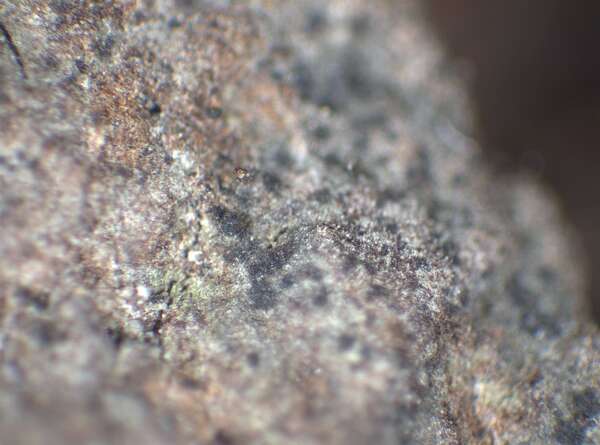

P.L. Nimis; Owner: Department of Life Sciences, University of Trieste
Herbarium: TSB (9296)
2003/01/23
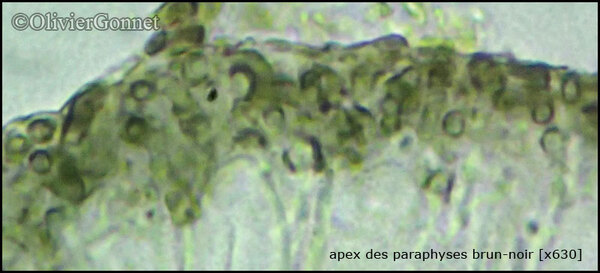
courtesy Olivier et Danièle Gonnet - Source: https://www.afl-lichenologie.fr/Photos_AFL/Photos_AFL_A/Textes_A3/Arthonia_apatetica.htm
France, Brives-Charensac - Haute-Loire
8/11/2016

courtesy Olivier et Danièle Gonnet - Source: https://www.afl-lichenologie.fr/Photos_AFL/Photos_AFL_A/Textes_A3/Arthonia_apatetica.htm
France, Brives-Charensac - Haute-Loire
8/11/2016
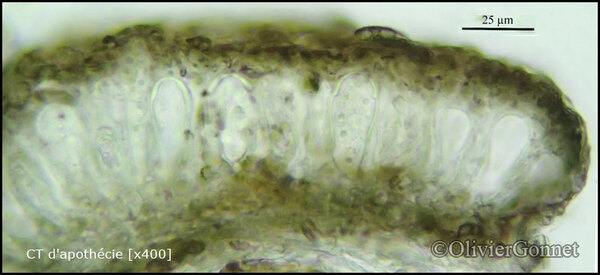
courtesy Olivier et Danièle Gonnet - Source: https://www.afl-lichenologie.fr/Photos_AFL/Photos_AFL_A/Textes_A3/Arthonia_apatetica.htm
France, Brives-Charensac - Haute-Loire
8/11/2016
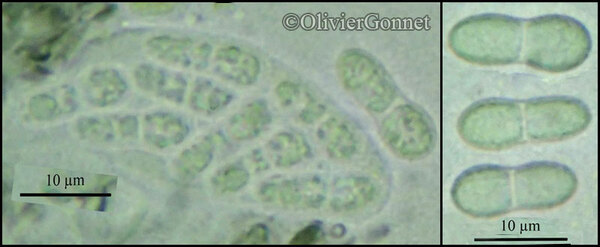
courtesy Olivier et Danièle Gonnet - Source: https://www.afl-lichenologie.fr/Photos_AFL/Photos_AFL_A/Textes_A3/Arthonia_apatetica.htm
France, Brives-Charensac - Haute-Loire
8/11/2016
Growth form: Crustose
Substrata: bark
Photobiont: green algae other than Trentepohlia
Reproductive strategy: mainly sexual
Poorly known taxon in need of further study
Commonnes-rarity: (info)
Alpine belt: absent
Subalpine belt: absent
Oromediterranean belt: absent
Montane belt: rare
Submediterranean belt: rather rare
Padanian area: extremely rare
Humid submediterranean belt: rather rare
Humid mediterranean belt: rare
Dry mediterranean belt: absent

Predictive model
| Herbarium samples |

courtesy Olivier et Danièle Gonnet - Source: https://www.afl-lichenologie.fr/Photos_AFL/Photos_AFL_A/Textes_A3/Arthonia_apatetica.htm
France, Brives-Charensac - Haute-Loire
8/11/2016

courtesy Olivier et Danièle Gonnet - Source: https://www.afl-lichenologie.fr/Photos_AFL/Photos_AFL_A/Textes_A3/Arthonia_apatetica.htm
France, Brives-Charensac - Haute-Loire
8/11/2016


P.L. Nimis; Owner: Department of Life Sciences, University of Trieste
Herbarium: TSB (9296)
2003/01/23

courtesy Olivier et Danièle Gonnet - Source: https://www.afl-lichenologie.fr/Photos_AFL/Photos_AFL_A/Textes_A3/Arthonia_apatetica.htm
France, Brives-Charensac - Haute-Loire
8/11/2016

courtesy Olivier et Danièle Gonnet - Source: https://www.afl-lichenologie.fr/Photos_AFL/Photos_AFL_A/Textes_A3/Arthonia_apatetica.htm
France, Brives-Charensac - Haute-Loire
8/11/2016

courtesy Olivier et Danièle Gonnet - Source: https://www.afl-lichenologie.fr/Photos_AFL/Photos_AFL_A/Textes_A3/Arthonia_apatetica.htm
France, Brives-Charensac - Haute-Loire
8/11/2016

 Index Fungorum
Index Fungorum
 GBIF
GBIF
